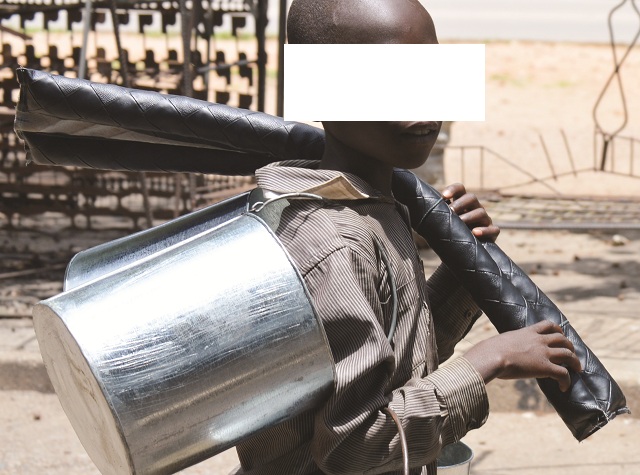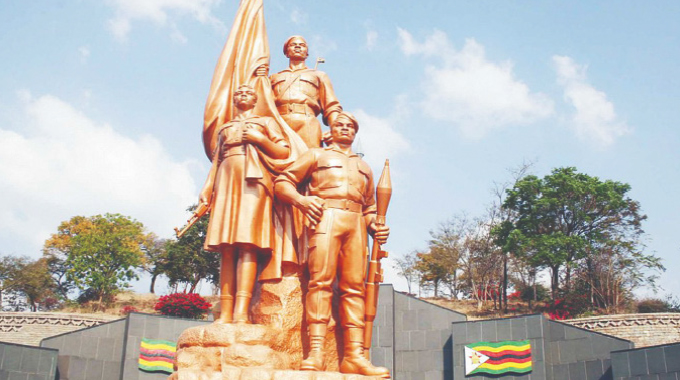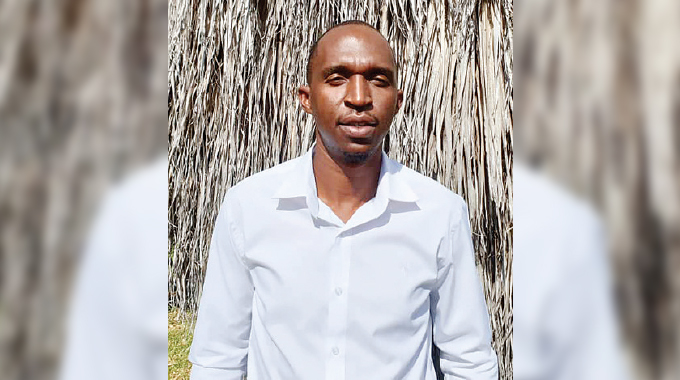Child poverty fuelling child labour worldwide


A child sells metal buckets and door stoppers at Mpopoma shopping centre, Bulawayo, in this file photo
Sam Muradzikwa
On Monday June 12, Zimbabwe joined the rest of the world to commemorate the World Day against Child Labour, and in a world where the rights of children are often neglected or ignored, Zimbabwe has reason to be proud, but also reason to be concerned.
Proud because children have the constitutional right to be protected from “economic and sexual exploitation, and from child labour, and from…any form of abuse,” Article 81 (1) (e) of the Constitution.
Concerned because the current reality of household poverty in general and child poverty in particular, are driving children into all forms of hazardous activities, both in the rural and urban areas when they should be at school or studying or helping at home or playing with their friends.
Although official statistics are outdated or unavailable, anecdotal evidence is overwhelming. There are reports that young school-going age girls are engaging in sexual exploits in exchange for very small sums of money, food and second-hand clothes (Young Women in Commercial Sexual Exploitation along two Transport Corridors in Zimbabwe, ZNCWC, 2017).
A leisurely walk during the day or at night through the CBD streets of Harare will expose you to children begging, vending, hawking, indulging in substance abuse and sleeping along the pavements. This is not the Zimbabwe we want.
We know that these working children are living in the poorest households and have to work to sustain their families. They are most likely to be orphaned, to be living with an elderly grandparent or with a caregiver who is chronically sick or disabled.
We know that these children drop out of school, or are so tired that even if they are in school they cannot concentrate on their studies. We also know that much of the economic activity engaged in by girls is sexually exploitative whereby they are forced to engage in prostitution because there is not enough food on the table.
Quite a significant number of the child labourers are ‘children on the move’ who are forced by circumstances to leave home for ‘greener pastures’ which eventually turn out to be ‘gloomy pastures’ with these children subjected to numerous forms of abuse and exploitation.
Many parents think it’s good for children to have a job so that they can learn how to be responsible and transition to the working world of adulthood, or they believe that children can learn more important skills outside of school.
This point is well taken, especially if these activities are done at a minimum and in fair and non-exploitative conditions.
Child labour can jeopardise the physical, mental or emotional well-being of a child, either because of its nature or because of the conditions in which it is carried out. Because much of child labour is hidden or happens outside the formal sector, it is extremely challenging to monitor.
Large formal-sector organisations tend not to employ children who are below the age of 15, because it is prohibited by the law and is monitored by the labour inspectorate system. This system is not effective in regulating the exploitation of children in the informal sector, however.
The big challenge is poverty that tends to fuel hazardous child labour and rampant exploitation. This draws our attention to the urgency of sustainable and equitable economic growth, and an extended coverage of social protection programmes.
And because children experience poverty differently from adults, they suffer predictable and sustained vulnerabilities. Poverty in childhood can have lifelong consequences for children’s physical, cognitive and social development.
While children themselves suffer the impacts of their poverty most severely and immediately, the harmful consequences for societies, economies and future generations can be felt nationally, regionally and even globally.
Dealing with hazardous child labour is not going to be achieved by the law alone! We need to address the drivers of multidimensional child poverty through providing quality and accessed services for the most deprived children – including in areas such as nutrition, education and health which represent their multidimensional poverty and drive whether children will be able to fulfil their potential and end the cycle of poverty and get them out of the exploitative and hazardous informal labour market.
In addition, in the absence of sustainable livelihoods for a majority of Zimbabweans, we need to address income or monetary child poverty through supporting families and households to have a minimum income and ensure financial barriers don’t prevent children from reaching their potential.
As we reflect on the World Day against Child Labour, let’s give this issue some serious thought!
Sam Muradzikwa is Chief Social Policy & Research at UNICEF Zimbabwe












Comments